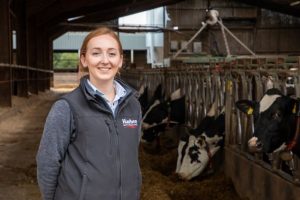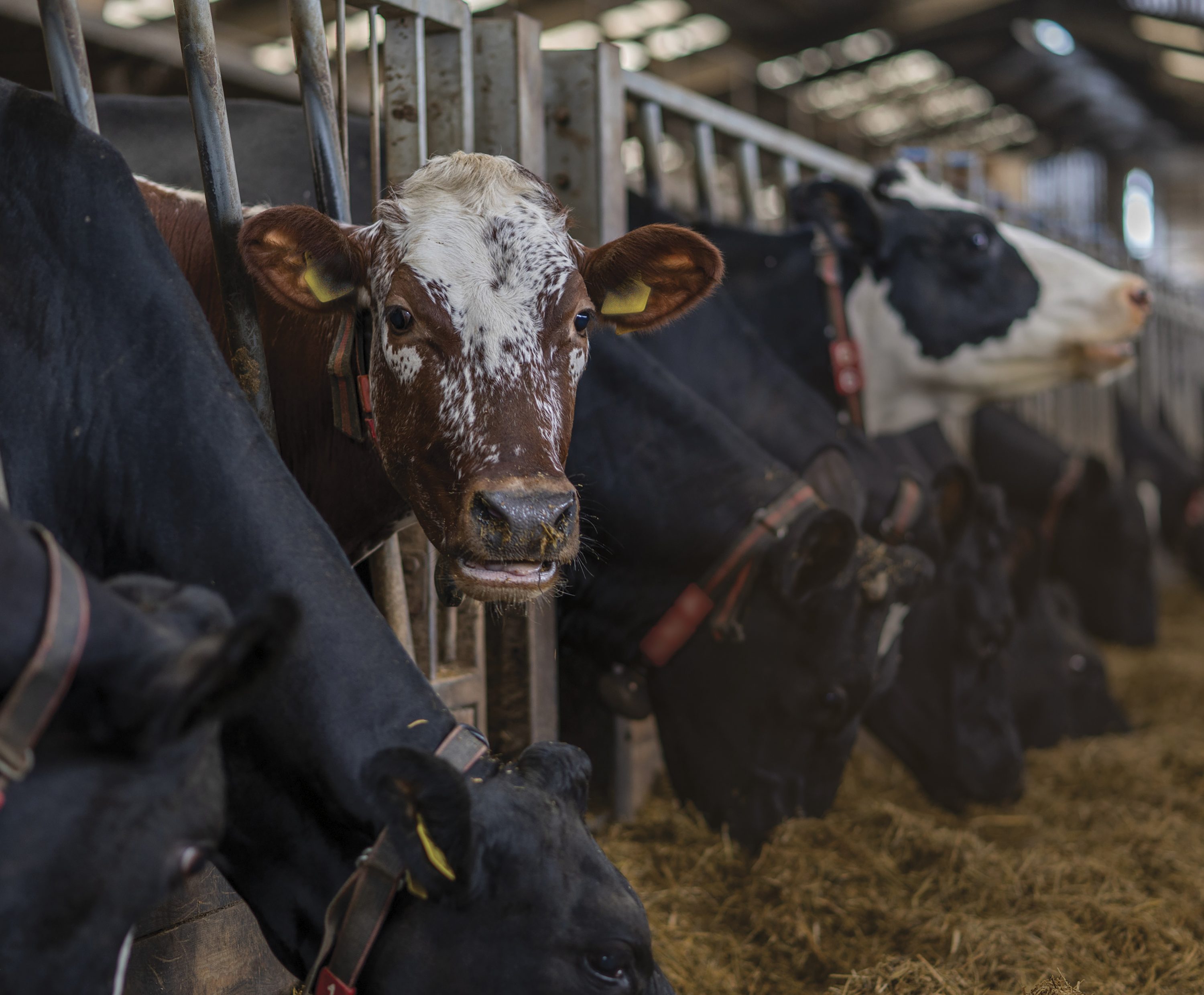
By Caitlin Palmer, Harbro Dairy Nutritionist
It really feels like spring is here and with the ground slowly drying up, slurry application has started and thoughts are turning to grass growth and silage making. The Met Office announced that 2023 was the warmest year on record (while also being incredibly wet at times), and with the trend towards winters getting warmer every year, the pattern of grass growth is changing.
While not everyone struggled to drive milk production from their 2023 silages, there was a significant number of farms that did. 2023 silages tended to have high lignin and NDF levels due to stemmier grass. A number of first cuts were taken at the traditional time, but due to the warm winter, grass growth had continued, and this led to old, overwintered, stemmy grass in the first cuts. Stemmy grass is high in lignin which is indigestible and locks up energy and protein, leading to lower milk production potential from the silage. We use DyNE (Dynamic Net Energy) to understand the total energy available to the cow which is a more accurate measurement than using ME. The DyNE of the 2023 silages has averaged at 5.45MJ/kg DM, where a value above 6MJ/kg DM is the target. The difference between the average and the target value is equivalent to 1.7kg milk if 10kg DM silage is fed. This isn’t taking into account any other factors such as potential for lower dry matter intakes or lower available protein which also affect milk yield.
Looking at the AHDB milk deliveries, these trended lower from September to December 2023 compared to the previous year and are trending lower again at the moment. At the same time, there was a 12% increase of forages analysed through the Harbro lab from September to December 2023 vs September to December 2022. This uplift was mainly driven by conversations between our dairy specialists and their customers about poor milk production from forage, with the results of the forage analyses enabling them to fully understand the ration then working on a plan to drive milk production.
Taking first cut earlier could be an option this year for farmers that have struggled to get good quality cuts in recent years. There will be less bulk, but it will mean there will be fresher growth for the second cut. A pre-cut grass test would help to make cutting decisions. This test provides a result on sugar levels which need to be high, and also gives an indication of NDF levels. The aim is to cut when NDF is 38-40% DM. If NDF is above target when tested, it should be cut soon to avoid the grass maturing even more and having an increased lignin content which would lead to poorer quality, lower energy silage. Pre-cut testing also measures nitrate levels which should be as low as possible, with anything less than 2500mg/kg being ideal. If you know you have cut grass which is stemmier and with a higher NDF than you would have liked, you can be proactive and put a plan in place ready for when the silage is fed.
With summer feed contracts being discussed, now is a good time to sit down with your dairy specialist and make a plan based on learnings from the previous year: which raw materials complemented the silages and which did not; are you going to try a different approach to silage making this year; is clamp management as good as it could be; what is the most cost effective way to drive milk production if silages are similar to last year? While no one has a crystal ball, it’s better to look back, learn from the previous years and form a plan rather than just hoping that things will be better this year. Improving milk yield from forage is a key step in improving feed efficiency and margin/cow/day.
Our DairyPlus range of compounds and blends are formulated based on Scottish forages using our NutriONics rationing software. Understanding that silages could present a challenge, we make sure our products complement the forages, and our range is backed up by a team of experts with over 100 years of experience to advise on the optimal rations and management practices.
Get in touch with your Harbro dairy specialist to start planning for the summer 2024 feeding period or email us for more information: farming@harbro.co.uk

